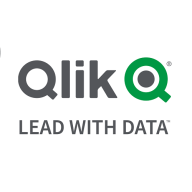

In the realm of data integration and ETL tools, Qlik Replicate and IBM InfoSphere DataStage compete fiercely. Qlik Replicate appears to have an advantage in real-time data processing and diverse database support, while IBM InfoSphere is stronger in complex data transformations and ETL capabilities.
Features: Qlik Replicate offers real-time Change Data Capture (CDC), unparalleled data replication ease without affecting source performance, and robust connectors for various databases. Its parallel processing and CDC are essential for industries like finance needing immediate insights. IBM InfoSphere DataStage, on the contrary, shines in ETL functions, robust integration abilities, and parallel processing for large data. It's well-suited for intricate data tasks in data warehousing environments.
Room for Improvement: Qlik Replicate could improve its user interface and simplify its error messages. Additionally, it would benefit from enhanced pricing options and better API integration. IBM InfoSphere DataStage should streamline its interface and enhance cloud and big data integration. Improvements in documentation clarity and performance monitoring are also needed. Both solutions need to advance their error diagnostic features for a superior user experience.
Ease of Deployment and Customer Service: Qlik Replicate is versatile, supporting public, on-premises, and hybrid cloud deployments; however, its customer service experiences are mixed, facing responsiveness issues. IBM InfoSphere DataStage advocates primarily for on-premises deployment, with growing hybrid support and solid technical assistance, albeit facing challenges in modern cloud integration. Both need to better their customer service to improve user satisfaction.
Pricing and ROI: Qlik Replicate is expensive and ideal for larger enterprises, with licensing linked to system cores and extra features augmenting costs. Demonstrated ROI comes from diminished manual reporting and data efficiency. IBM InfoSphere DataStage is more cost-effective relative to enterprise counterparts but is costly compared to open-source alternatives. ROI is noted in reduced operational costs and improved data handling. Both solutions present long-term investment benefits, albeit differing in pricing structures.
I conducted a cost comparison with the AWS service provider, and this option is much cheaper than the Kinesis service offered by AWS.
Customers have seen ROI with Qlik Replicate because they get their data for analysis faster, enabling quicker decision-making compared to traditional data sourcing methods.
We also have the flexibility to submit a feature request to be included as part of the wishlist, potentially becoming a product feature in subsequent releases.
IBM tech support has allocated dedicated resources, making it satisfactory.
Even priority tickets, which should be resolved in minutes, can take days.
Support response times could be improved as there are sometimes delays in receiving replies to support cases.
The system could be scaled to include more sources and functions.
The solution needs improvement in connectivity with big data technologies such as Spark.
I wonder if it supports other areas, such as cloud environments with open source support, or EdgeShift.
It is a core-based licensing, which, especially in the banking industry, results in the system capacity being utilized up to a maximum of 60%.
Qlik Replicate could be improved in the next release by incorporating more monitoring options to monitor the logs.
Pricing for IBM InfoSphere DataStage is moderate and not much expensive.
For Qlik Replicate, the setup cost includes the requirement of a server, which represents the hardware cost that must be covered.
Licensing is calculated based on the machine's total capacity rather than actual usage.
The failure detection has been very useful for us, as well as the load balancing feature.
As we are a financial organization, security is our main concern, so we prefer enterprise tools.
The most valuable feature of Qlik Replicate is their change data capture feature.
Data retrieved from the system can be pushed to multiple places, supporting various divisions such as marketing, loans, and others.


IBM InfoSphere DataStage is a high-quality data integration tool that aims to design, develop, and run jobs that move and transform data for organizations of different sizes. The product works by integrating data across multiple systems through a high-performance parallel framework. It supports extended metadata management, enterprise connectivity, and integration of all types of data.
The solution is the data integration component of IBM InfoSphere Information Server, providing a graphical framework for moving data from source systems to target systems. IBM InfoSphere DataStage can deliver data to data warehouses, data marts, operational data sources, and other enterprise applications. The tool works with various types of patterns - extract, transform and load (ETL), and extract, load, and transform (ELT). The scalability of the platform is achieved by using parallel processing and enterprise connectivity.
The solution has various versions, catering to different types of companies, which include the Server Edition, the Enterprise Edition, and the MVS Edition. Depending on which version a company has bought, different goals can be achieved. They include the following:
IBM InfoSphere DataStage can be deployed in various ways, including:
IBM InfoSphere DataStage Features
The tool has various features through which users can integrate and utilize their data effectively. The components of IBM InfoSphere DataStage include:
IBM InfoSphere DataStage Benefits
This solution offers many benefits for the companies that utilize it for data integration. Some of these benefits include:
Reviews from Real Users
A data/solution architect at a computer software company says the product is robust, easy to use, has a simple error logging mechanism, and works very well for huge volumes of data.
Tirthankar Roy Chowdhury, team leader at Tata Consultancy Services, feels the tool is user-friendly with a lot of functionalities, and doesn't require much coding because of its drag-and-drop features.
Qlik Replicate is a data replication solution for replicating data from one source database to another for business intelligence software. It offers data manipulation and transformations, replication without impacting source databases, and ease of use without needing ETL. The solution is stable and user-friendly, with detailed logging and support.
Qlik Replicate has improved the organization by allowing each team to replicate their data into a single-source data location. The most important feature of Qlik Replicate is its ability to replicate and update records without needing a programmer.
We monitor all Data Integration reviews to prevent fraudulent reviews and keep review quality high. We do not post reviews by company employees or direct competitors. We validate each review for authenticity via cross-reference with LinkedIn, and personal follow-up with the reviewer when necessary.